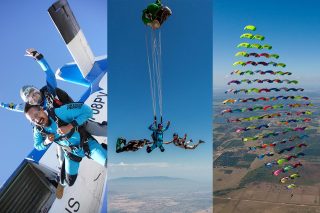What is freefall and how should you prepare for it during a tandem skydive?
Skydiving
Posted by: Skydive Perris
3 years ago
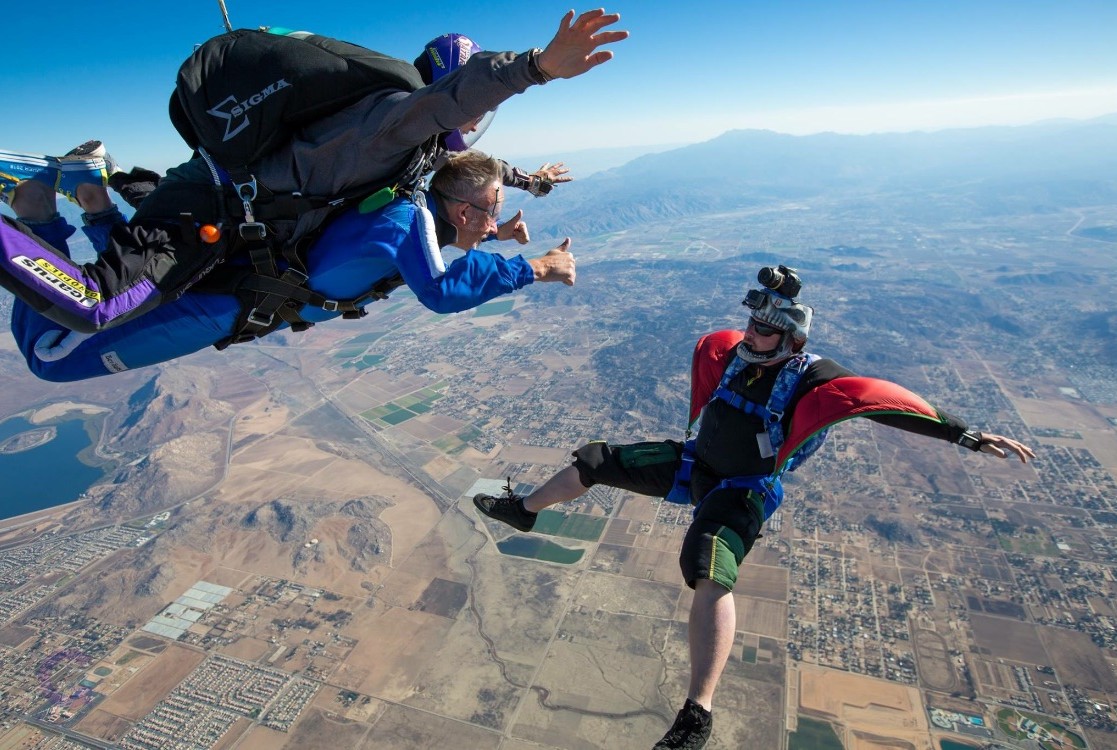
While ascending to altitude in an airplane is certainly neat, and floating about beneath a fabric of a parachute is a peaceful treat, for most skydiving is all about the freefall.
In skydiving, freefall begins as soon as you exit the plane and ends when the parachute is deployed and fully open. But here’s a secret: skydiving freefall isn’t technically a freefall at all! Scientifically speaking, either way you shake it — Newtonian physics-wise or with the perspective of general relativity — when you skydive you aren’t really experiencing freefall. By definition, an object in freefall is said to be in motion with no other force (other than gravity in the case of Newtonian physics) acting upon it. In skydiving freefall, there is another factor beside gravity at play: air resistance.
Although the air may appear to be empty, it is composed of nearly unfathomable numbers of molecules. For example, in just one cubic meter of air there are an estimated 2.53 x 1025 molecules of air. So as a skydiver, or a pair of tandem skydivers, falls through the air, they collide with these particles. Much like a swimmer through water, the particles are pushed aside by the falling skydivers, and as the skydivers collide and push through the particles, it creates something we call air resistance or drag. These collisions are what prevent skydivers from infinitely increasing speed.
Terminal Velocity
So how fast do you freefall skydiving? The freefall speed of a skydiver is going to depend upon the amount of air resistance that is encountered. The maximum skydiving freefall speed, known as terminal velocity, is the speed reached when enough air resistance is encountered to prevent further acceleration. For a pair of tandem skydivers, this sits at about 120 miles per hour.
How Long Do You Freefall When Skydiving?
The length of time you will be in freefall depends on two factors: the altitude at which you exit the aircraft and the skydiving freefall speed you reach.
At Skydive Perris, a typical tandem skydive will have an exit altitude of 12,500 feet (14,000 ft mean seal level). From this exit altitude, you will enjoy a skydiving freefall that lasts roughly 60 seconds.
While we mentioned above that the typical speed of a tandem skydiving pair is 120 miles per hour, this varies depending upon the combined weight of the student and instructor and their body positions. As you can imagine, the heavier the individuals are, the faster they will fall. But the shape that is taken while falling also affects how fast the skydiver or skydiving pair will fall. The more compact or aerodynamic the body position, the faster the skydiver will fall.
There are disciplines in skydiving where individuals fall with their head down to earth rather than with their belly. These individuals reach a skydiving freefall speed of 150-180 miles per hour, and therefore they experience less freefall time.
How Does Skydiving Freefall Feel?
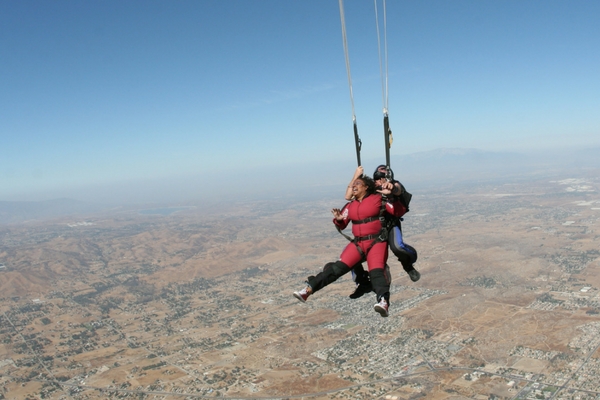
Skydiving freefall doesn’t feel like falling at all. Rather, it is a unique sensation more akin to a buoyant, floating feeling. Because of the collision with air particles mentioned above, you feel somewhat supported while in freefall.
Another cool aspect of skydiving freefall is the amount of control you have while falling. By manipulating airflow and maneuvering your body position, a skydiver can move forward or backward, turn left or right, side-slide, and even change the fall rate!
How To Get The Most Out Of Your Skydiving Freefall
To get the most out of your skydiving freefall, it’s important to keep a few key things in mind:
Pick The Right Clothes
It’s important to wear the correct clothing to ensure a pleasant freefall, as the wrong attire can put a damper on an otherwise awesome experience. While we will provide a jumpsuit for you to wear over your clothing, it’s up to you to choose seasonally appropriate items that you are comfortable in and to wear closed-toed sneakers. We also suggest avoiding jewelry and accessories.
Breathe
Some are tempted to hold their breath during the freefall portion of the skydive, but trust us: it’s much better if you breathe. While the wind in your face may be a new sensation, it’s no stronger than if you stood in front of a strong fan. You can still breathe, but you just need to be a bit more conscious of it.
Get It On Film!
If you don’t have proof, did it even happen? Your first skydiving freefall will be a moment you’ll want to hold on to. What better way to capture the memory than with a skydiving video and photo package? From a personal videographer shooting HD video and stills to an ultimate selfie option, we will have the perfect video package for you.
Maximize Your Skydiving Freefall!
If you crave even more skydiving freefall, you can maximize your freefall fun with a HALO tandem skydive from 18,000 mean seal level! Instead of a minute, you’ll enjoy nearly 90 seconds of freefall!
Interested? Experience skydiving freefall for the first time and book your jump today — while contacting Skydive Perris for the ultimate skydiving adventure!
Categories:
You May Be Interested In:
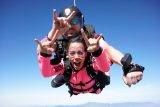
Unique California Experience Gifts for the Holidays
1 month ago by Skydive Perris

Skydiving Patches You Can Collect at Skydive Perris
3 months ago by Skydive Perris

Famous People Who’ve Jumped at Skydive Perris
3 months ago by Skydive Perris
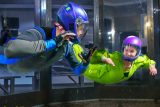
The Ultimate Family Hidden Gem in SoCal
6 months ago by Skydive Perris
